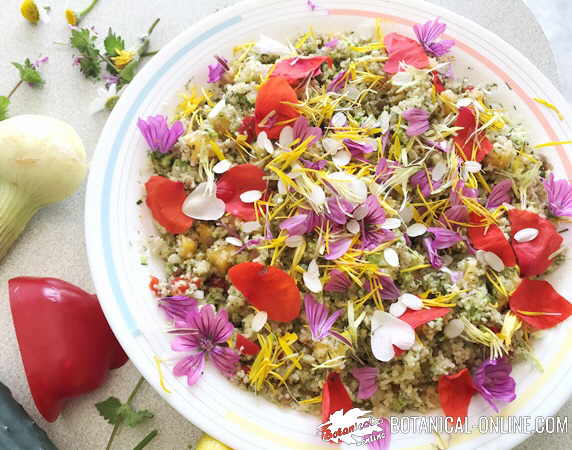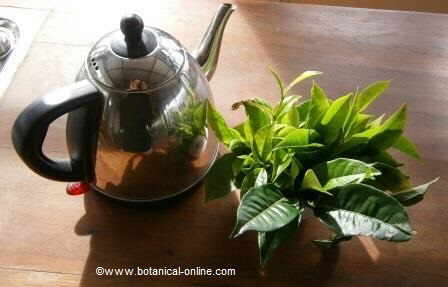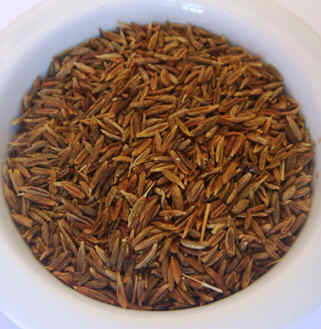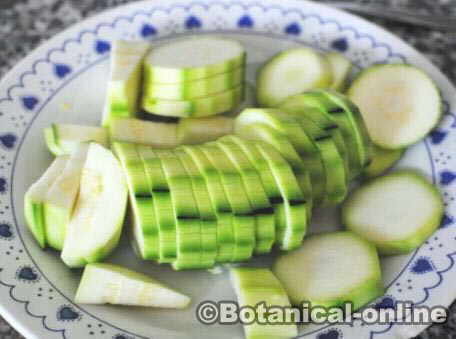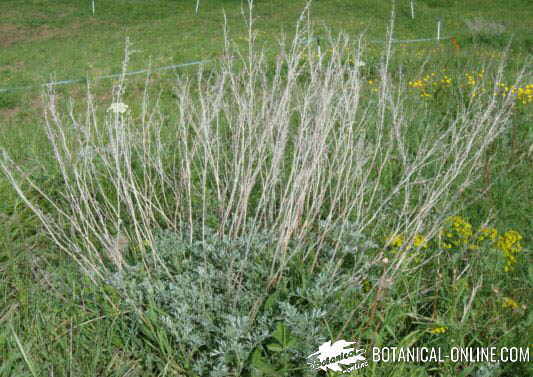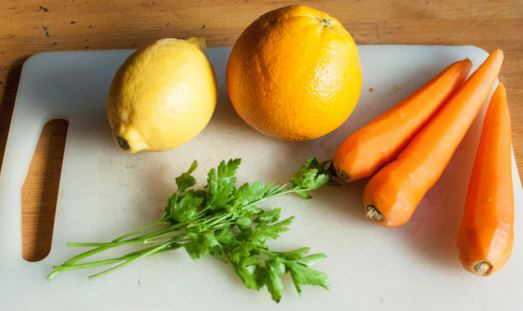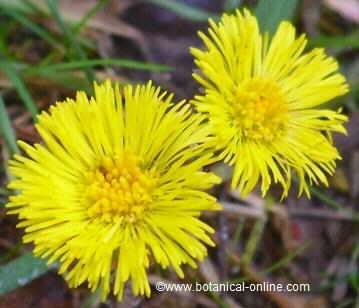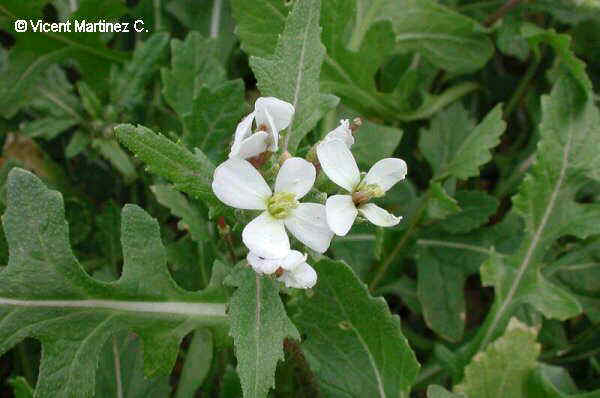Contents
- 1 What are acorns?
- 1.1 Are acorns edible? Can we eat them?
- 1.2 Acorn consumption history
- 1.3 Other uses of acorns in the kitchen
- 1.4 What do acorns contain?
- 1.5 Acorns benefits
- 1.6 Acorns harvesting time
- 1.7 Types of acorns
- 1.8 Acorn harvesting
- 1.9 Acorn storing
- 1.10 How are acorns consumed? Can you eat them raw?
- 1.11 Nutritional value of acorns
- 1.12 Is the consumption of acorns safe?
What are acorns?
An acorn is a fruit (a nucula) produced by different species of trees of the genus Quercus . Among these, there are oaks (Quercus ilex L. ssp. ilex), holm oaks (Quercus ilex L. ssp. rotundifolia) , cork oaks (Quercus robur L.), white oaks (Quercus alba), Kermes oak (Quercus coccifera) etc.
Are acorns edible? Can we eat them?
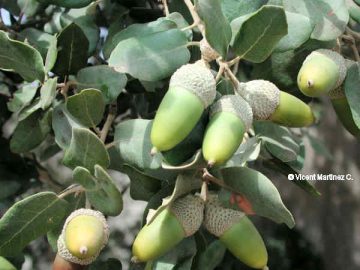
Acorns are edible wild fruits, consumed for many years by our ancestors. As with other wild plants, the consumption of these fruits was considered food for the poor. At present, the consumption of acorns is little known, and they are practically only used to feed the animals.
Acorn consumption history
Sweet acorns have been the basis of food for the first collecting hunter villages, both in Europe and in America.
In Europe, the oak acorns were consumed, while in America, the sweet acorns of the white oak (Quercus alba) were collected by the first settlers to eat them raw or roasted, as if they were chestnuts.
These people learned to boil them with different waters to eliminate the bitterness that these fruits have (due to their high tannin content) and make them more edible. This process is a way of debittering acorns, that is, reducing their tannin content to make them edible or more digestive.
Other uses of acorns in the kitchen
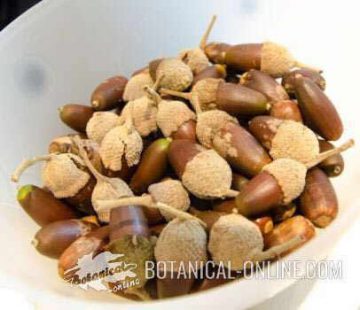
- Acorn flour: Acorn flour is also traditionally made from acorns, which is used to make bread, or soups together with other edible wild plants.
- For many years, especially for farmers, the infusion of roasted acorns has been a substitute for coffee.
- Korean cuisine makes an acorn jelly, called dotorimuk or tot’orimuk.
What do acorns contain?
Sweet acorns are an energetic and nutritious food, which mainly provides carbohydrates (40%), fats (24%, mostly monounsaturated), proteins (6%) and fiber. Therefore, one could say that acorns have a nutritional value between chestnuts and almonds: they provide energy, mainly in the form of carbohydrates, such as chestnuts, but they are richer in fat than chestnuts.
Among the vitamins and minerals they contain, they are rich in group B vitamins (except B12), they contain a lot of phosphorus, potassium, calcium and magnesium. They have an iron content similar to chestnuts (1mg of iron per 100g).
The best thing to introduce again this dried fruit, currently forgotten or banished from the kitchen, is that the acorns bring a new flavor to the kitchen, unconventional, reminiscent of chestnuts, with a delicious crunchy texture.
Acorns benefits
What stands out most about acorns is their tannin content, which are the components responsible for their bitterness.
Ingestion of many tannins can cause gastric irritation, vomiting and belly pain. However, in small doses, tannins may have beneficial properties
Acorns, due to their tannin content, have the following main properties:
- Lower blood sugar (interesting in diabetics)
- Diminish cholesterol levels
- Help detoxify the body, due to its antioxidant content.
Acorns harvesting time
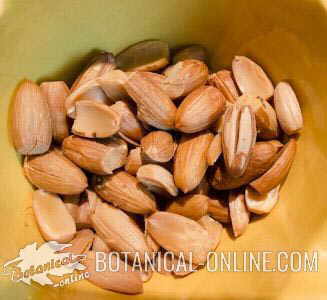
Acorns are collected in autumn, between the months of September and November. It is distinguished when they are mature because they have a brown color, thickened size, and because they easily detach from their cap (husk), which is why many of them are already on the ground.
Types of acorns
There are different types of acorns depending on the tree they come from. Within the same species, there are trees that produce acorns sweeter than others, depending on whether they have more or less tannin content.
It is recommended to look for those trees that produce sweet acorns, which will also be the ones with the lowest tannin content. Sour acorns have a higher content of tannins (bitter substances) and can cause poisoning in case of important ingestion.
It is possible to verify how in the villages, those who consume acorns, have located the trees that produce sweet acorns. For example, it is known that, in general, the acorns produced by holm oaks (Quercus ilex L. ssp. rotundifolia) are sweeter than those produced by oaks (Quercus ilex L. ssp. ilex). It is also known that some oaks produce sweet acorns, while others produce too bitter acorns, which are not edible.
Acorn harvesting
They can be harvested from the ground, with the precaution of collecting only the whole ones, and observing that these are not bored by weevils or rotted by moisture, in which cases they should not be collected. You can also collect acorns directly from the tree.
You should not collect all or most acorns from a tree. As mentioned in the section on “How to harvest wild plants”, so that the consumption of these plants is sustainable, a responsible collection is necessary. Acorns are necessary to feed forest animals (squirrels, birds, …), or for some insects to complete their life cycle.
Acorn storing
Unlike other fruits of the forest, acorns do not have to be consumed immediately, but can be stored (as do squirrels), and they are well preserved for a while. Its shell and its tannin content protects them from the attack of bacteria.
At home, the traditional method of storing acorns is to dry-clean them of dirt, dry them and store them in breathable bags, in a dry, cool and lightless place. But, due to the moisture of these fruits, acorns are very susceptible to fungal attack during storage. The biggest problem is that most of the time, these fungi are not visible and are highly toxic, because they produce aflatoxins, a type of mycotoxins that are very harmful to the liver.
For this reason, at home level, it is not recommended to keep acorns for a long time.
How are acorns consumed? Can you eat them raw?
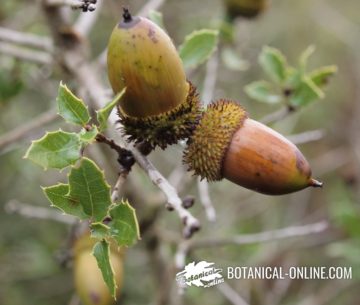
Sweet acorns can be eaten raw, such as chestnuts, but it is not recommended to eat many, as they can be indigestible.
Likewise, not all trees produce sweet acorns. For example, the acorns of the holm oak (Quercus ilex L. ssp. rotundifolia) are considered, by many,the best acorns.
In general, acorns have to be debittered before being consumed.
In addition, they should be consumed in moderate amounts (the excess may be indigestible), and it is always better to eat them after meals (or in some recipe), but it is not recommended on an empty stomach.
Nutritional value of acorns
Below, there is a table with the nutritional composition of raw acorns and acorn flour. It should be mentioned that the nutritional composition may vary slightly between species, depending on the tree.
| Nutritional composition of acorns | ||
|---|---|---|
| Nutrient | Raw acorns (100g) | Acorn flour (100g) |
| Water (g) | 27,9 | 6 |
| Energy (Kcal) | 387 | 501 |
| Fat (g) | 23,9 | 30,17 |
| Protein (g) | 6,2 | 7,5 |
| Carbohydrates (g) | 40,75 | 54,65 |
| Calcium (mg) | 41 | 43 |
| Iron (mg) | 0,79 | 1,21 |
| Magnesium (mg) | 62 | 110 |
| Phosphorus (mg) | 79 | 103 |
| Potassium (mg) | 539 | 712 |
| Sodium (mg) | 0 | 0 |
| Zinc (mg) | 0,51 | 0,64 |
| Vitamin C (mg) | 0 | 0 |
| Thiamin (Vit B1)(mg) | 0,112 | 0,146 |
| Riboflavin (Vit B2)(mg) | 0,118 | 0,154 |
| Niacin (Vit B3 (mg) | 1,827 | 2,382 |
| Pyridoxine (Vit B6) (mg) | 0,528 | 0,688 |
| Folate (Vit B9) (mcg) | 87 | 114 |
| Vitamin A (UI) | 39 | 51 |
Is the consumption of acorns safe?
The traditional use of the acorn as food indicates that this fruit has nutritional properties, so it can be used to complete the diet, being especially beneficial in cases where there is obesity, type 2 diabetes and high cholesterol.
However, some acorns have a very high amount of tannins, especially those that have a bitter taste. Therefore it is advisable not to exceed its consumption and not eat those that have a bitter taste.
![]() More information on acorn
More information on acorn

